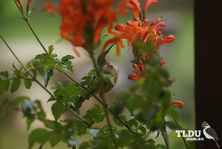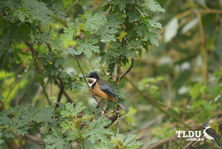
Shoppers Feedback:
Jan 17, 2017
Hello Ros,
I have now paid the invoice, but I would like to write to you just to say a big THANK YOU for getting me the Penguin!
The ChatterMate Penguin became a nice memory for me when I was in New Zealand, and I am so greatful to you for arranging so that I could have it! :-)
Thank you so much!!!!!!!!!!!
Regards,
Malin
Hi Ros,
Many thanks for your very kind email. I really appreciate your prompt reply!
I appreciate your advice regarding the decorations and customs. These are a gift for my daughter’s exchange student family so when she returns home on the weekend I will show her and see if she loves them as much as I do!
Thanks so very much again - I am truly grateful for your kind assistance.
Kind Regards
Bernadette
Ros,
Thanks again for the great customer service. It's a refreshing change!
Best regards,
Trevor
Hey Roz,
Thank you for your emails. Just loved my first order. The cute little Aussie bush critters are going to be used for an office Christmas decoration. My colleagues also liked them and talked about making an order to your site. I'll send you a photo when completed.
I'll be ordering more to send to my daughter's host family in America.
Fabulous service from you.
Kind regards,
Michelle
Thankyou. Order arrived today. One very happy grandson with his new beastly binoculars.
Regards,
Irene
- Home
- Wild Wonders
- Shop
- Aromas of Australia
- Australian Made
- Books
- Book Marks
- Christmas Decoration Sale
- Christmas Decorations
- Clocks
- Drink Holders
- Garden & Outdoor
- Gift Wrapping & Cards
- Home & Giftware
- Jewellery
- Keyrings
- New Products
- Pencils & Pen Holders
- Photo Frames
- Plush Toys
- Plush with Sound
- Sheepskin Rugs
- Stationery
- Stone Carvings
- Toys & Games
- Travel Goods
- Wedding
- Wild Figurines
- Wildlife Safety Products
- Wind Chimes
- Wine Charms
- View All Products
- Wildlife
- Australiana
- Explore
- Contact Us
Eastern Spinebill

Quick Facts
| Length: | - |
| Height: | 16 cm |
| Weight: | 11 grams |
| Colour: | - |
| Habitat: | Heath, forest and woodland areas |
| Food: | Insects and nectar |
| Predators: | - |
| Status: | Not Present in NT and WA. Secure in all other states and territories |
The Eastern Spinebill is most easily recognised by its very long, fine, down-curved beak and energetic flight, during which its white outer tail feathers are prominent. Males have a grey-black crown which extends in a black line on either site of the breast. The breast and throat are white, with a rufous patch in the centre of the throat. The wings and lower back are dark grey and the underparts and upper back are buff. Females are similar to males but have less distinct markings.
Crescent Honeyeater, Tawny-crowned Honeyeater, Western Spinebill (in Western Australia)
The Eastern Spinebill's range is generally east of the Great Dividing Range from Cooktown in Queensland to the Flinders Ranges in South Australia
The Eastern Spinebill prefers heath, forest and woodland.
Largely sedentary, but undergoes some local movements, especially away from higher elevations in autumn/winter.
The Eastern Spinebill feeds on insects and nectar while perched or while hovering. Nectar is obtained from a wide array of flowers, including grevilleas, but its beak is particularly well-suited to extracting nectar from tubular flowers such as epacrids.
The Eastern Spinebill sometimes hovers like a hummingbird when feeding on the nectar from flowers. Most Australian honeyeaters feed on flowers from a perched position.
The Eastern Spinebill's nest is a small cup of twigs, grass and bark, combined with hair and spider's web, built in a tree fork, generally between 1 and 5 metres from the ground. Only the female builds the nest and incubates the eggs, but both parents feed the young when they hatch.
The Eastern Spinebill sometimes visits urban gardens that are well-vegetated, and will feed from both native and exotic flowers, including fuchsias.
Last Updated: Friday 6th September, 2013
BirdLife Australia - www.birdlife.org.au
BUSH e-TELEGRAPH
Signup for our monthly newsletter the "e-Telegraph"
Quick Links
Home | The Beginning | About The Land Down Under | Wild Wonders | Advertise on Wild Wonders | Christmas Decoration Sale | Christmas Tree Decorations | Drink Holders | Plush with Sound | Stone Carvings | Wildlife Wine Charms | Freebies | Australian Wildlife | Help Our Wildlife | Australiana | Photo of the Month | Explore The Land Down Under | Contact Us | Legal Notices


